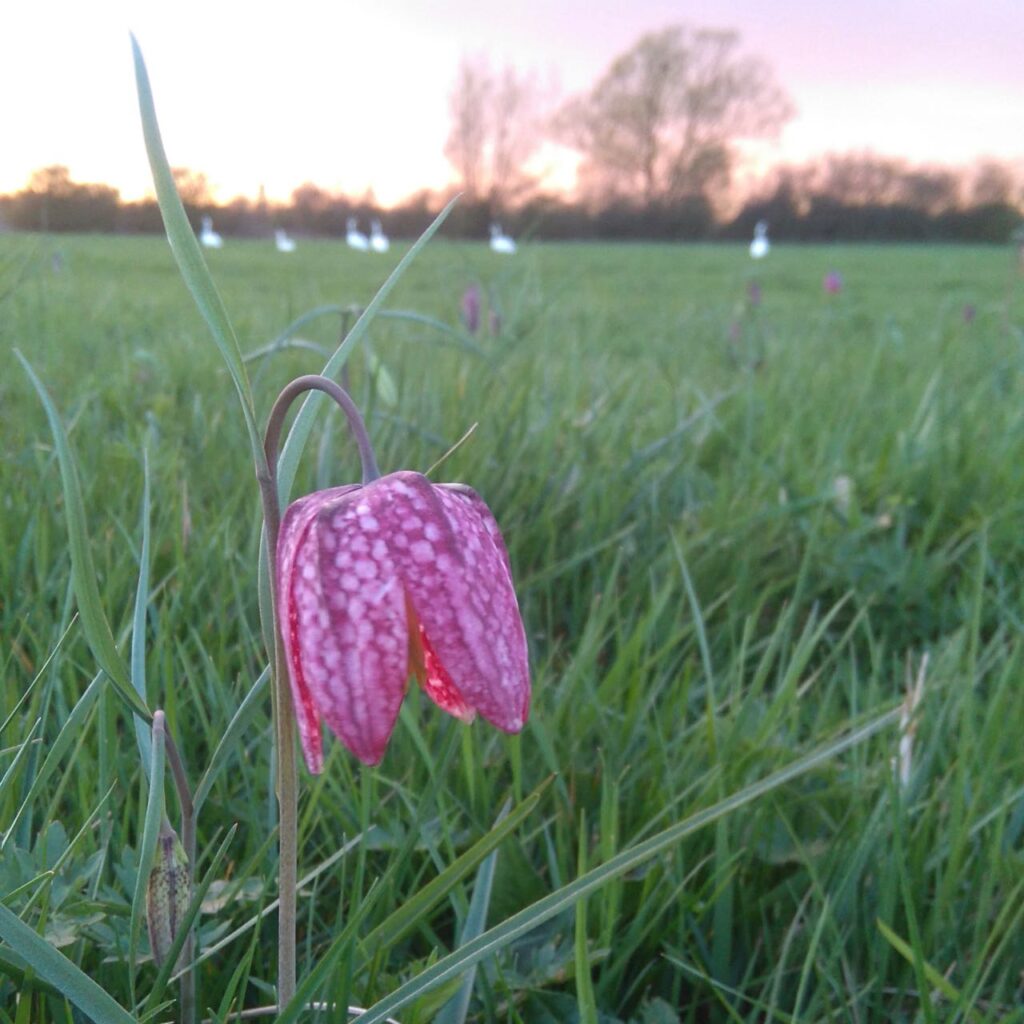Pasture Champions: Andy Rumming 4/4
 Geesefrit snakeshead fritillary
Geesefrit snakeshead fritillary
Are there any benefits to the farm that are directly attributable to the Pasture for Life approach? What would be lost if there were no ruminant animals on your farm and what are the benefits from having them?
In April 2021 we had a spell of continuously cold weather with no grass regrowth and limited insect activity. We had our cows out mob grazing, and the areas around the cattle appeared to be the only areas with insect activity – this meant we had every passing migrant and lingering over-wintering bird in the area, concentrated in the small area with our cows.
100's of Meadow Pipits, Yellow Wagtails, Redstarts, Whinchats, Wheatears, even a Pied Flycatcher – it was a bird watchers paradise.
This only happed due to the cows, lack of insecticides used, a grazing system which mean they could be there and thrive, and applied knowledge gleaned from 100s of other PFLA members over the years. For us cows are the engine house for maintaining and kick start biodiversity at Waterhay and North Meadow.
What lessons have you learnt and would like to share with others?
- Whenever a researcher or PHd student wants to survey a farm, make contact and invite them to come, but do ask them to share with you the full data for your farm and the final report for the work they are undertaking. Chase them up if necessary.
- Reach out to local wildlife groups, keen individuals, neighbouring land owners. Do this in person, through Facebook, Twitter or email, invite them to visit
- When any of the above visit, ask to follow them round, ask questions, take notes – it’s a lesson on your own farm!
- Build a contact list of experts who can help you identify, monitor and find out about your biodiversity and nurture them.
- Subscribe to British Wildlife magazine – this publication is a constant source of inspiration, information and big picture context.
OTHER BIODIVERSITY CASE STUDIES



